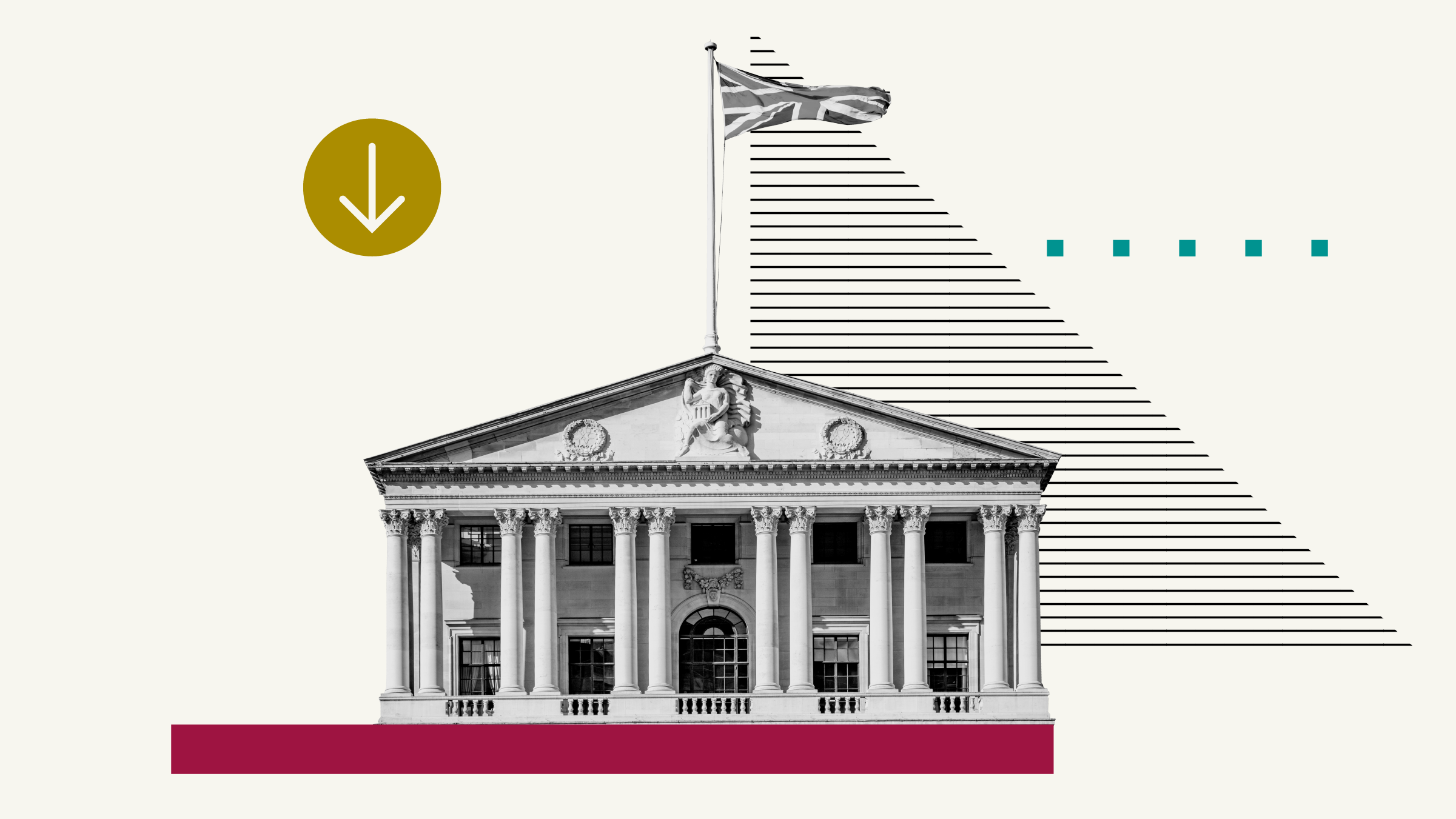
The Bank of England has cut rates for the third time in just over six months, a move widely anticipated by markets.
In a statement, the Bank said its monetary policy committee (MPC) had voted seven to two in favor of a quarter point cut at its first meeting of the year, leaving the base rate at 4.50%. Two members had voted for a half-point cut to 4.25%.
In the press conference following the meeting, Governor Andrew Bailey said that further rate cuts should be expected, but that “we will have to judge meeting by meeting how far and how fast”. He reiterated that a “gradual and careful approach to monetary policy remains appropriate”.
“The MPC voted unanimously in favor of this month’s cut, a clear sign that despite the recent uptick in inflation, central bankers feel that at 2.5%, inflation in the UK is broadly under control, despite it resting above the bank’s 2% targeted level,” says Morningstar’s chief European strategist Michael Field.
“With plentiful equity market opportunities for investors in the UK, we believe further interest rate cuts over the course of 2025 will lighten the load for consumers and businesses alike. This should create a more supportive economic backdrop for commerce generally.”
Interest Rate Cut - Market Reaction
Markets are currently pricing in another 50 basis points of cuts in 2025.
In response to today’s news, the FTSE 100 rose in London, a welcome uplift after negative sentiment regarding the effect of tariffs by the Trump administration dominated equity trading in the first half of the week. This morning the index had shrugged off these fears to hit its second record high of 2025 ahead of the decision.
Meanwhile, the yield on UK two-year gilts fell to 4.09%, a fall of 0.05 percentage points.
“The BOE’s narrative is very difficult to interpret, and it can be read as both dovish and hawkish,” said Kathleen Brooks, research director at XTB.
Justifying the pace of its moves, the Bank of England said in a statement that sufficient progress had been made in the fight against inflation to warrant economic stimulus.
“There has been substantial progress on disinflation over the past two years, as previous external shocks have receded, and as the restrictive stance of monetary policy has curbed second-round effects and stabilized longer-term inflation expectations,” it said.
“That progress has allowed the MPC to withdraw gradually some degree of policy restraint, while maintaining bank rate in restrictive territory so as to continue to squeeze out persistent inflationary pressures.”
Today’s decision was also accompanied by a larger quarterly monetary policy report, whose aim is to give a more detailed perspective on what the Bank of England thinks is going on in the global economy. This bigger report is market sensitive as it helps professional investors and traders revise their expectations.
Inflation and Interest Rate Forecasts Revised Upwards
In the report, the Bank of England subtly played down concerns about the effect of a second Trump administration on global economies.
But it also upgraded its forecasts for inflation and interest rates since the last report in November, and downgraded its forecasts for UK GDP.
Inflation is expected to rise by 2.8% in the first quarter of this year, up from last year’s forecast for 2.4%, and rise by 3% in Q1 2026, up from the forecast for 2.6% made in November. CPI inflation is then expected to fall back towards the 2% target in 2027.
The Bank also predicts that interest rates are likely to be 4.2% in Q1 2026, against November forecasts for 3.7%. Interest rates are expected to be 4% in 2028, which is consistent with the “higher for longer” narrative.
Lindsay James, investment strategist at Quilter Investors said that the inflation forecast is a cause for alarm: “The BoE’s prediction that inflation peaks at 3.7% in Q3 this year is quite shocking given previous forecasts and certainly won’t be helped by the April hike in minimum wages or higher National Insurance contributions on employers.”
UK Economic Growth is a Concern
On the flipside, UK GDP is forecast to grow by 0.4% in the first quarter of this year, below November 2024 forecasts for 1.4% growth. And the forecast for GDP growth in 2025 has been halved from 1.5% to 0.75%, before a revival in 2026 and 2027.
Bailey said in the press conference that economic activity is weakening and the jobs market is slowing down.
Central banks often counter slowdowns with looser monetary policy to stimulate the economy, but the Bank will have to be mindful of rising inflation this year when it makes its upcoming interest rate decisions.
“From an investor standpoint, the stagflationary thesis remains in the UK and the pound will likely bear some of that brunt,” said Neil Mehta, portfolio manager, RBC BlueBay Asset Management. After the decision, the pound softened against the euro and dollar.
In the press conference, Andrew Bailey said that economic growth could still pick up this year.
Zara Nokes, global market analyst at J.P. Morgan Asset Management, picked up this “glass half full” narrative in a note stressing the public sector’s role in picking up the baton of growth from the private sector:
“The growth outlook might also not be as bad as business surveys suggest, with the large increase to public services spending announced in the Autumn Budget likely to provide a tailwind to growth this year, offsetting some of the private sector weakness.”
What is the Bank of England’s Base Rate?
Today’s decision means the Bank of England’s base rate now sits at 4.5%, down from 4.75% in December, and 5% in August last year.
Prior to August’s fall, rates previously sat at 5.25%—the highest level for 16 years, and the result of surging inflation after the pandemic and a dramatic rise in energy prices following Russia’s invasion of Ukraine.
Though today’s decision means UK rates are once more falling, the process of lowering the base rate is taking longer than many anticipated. At the end of 2023, several commentators had expected a string of rate cuts from the Bank of England. By the close of 2024, there had been but two—on Aug. 1, and Nov. 7.
As of the latest data from the Office for National Statistics, UK inflation is currently 2.5%, above the BoE’s 2% target. The Bank of England expected CPI to rise to 3.7% during 2025.
Will the Bank of England Continue to Cut Rates in 2025?
What the Bank of England will do to the base rate in 2025 has been the subject of fierce debate.
In January, markets were pricing in just one cut this year, with consensus just shy of agreement there would be a second.
However, some professional investment houses have already said they think markets are wrong. Last month, analysts at Goldman Sachs concluded the Bank of England could well cut rates as many as six times before spring 2026.
Today Simon Dangoor, head of fixed income macro strategies at Goldman Sachs Asset Management, said: “We foresee the BoE continuing its quarterly easing pace through the uncertain period in H1 but accelerating in H2 when dust settles, with a total of five cuts this year.”
According to FactSet consensus, the Bank of England will likely make a further three 0.25% cuts this year; one in each of the year’s remaining quarterly meetings in May, August and November. This will leave interest rates at 3.75% by the end of December 2025.
Interestingly enough, however, this same consensus suggests that, after falling four times in total in 2025, rates will sit at 3.25% at the end of 2026, before rising to finish 2027 at 3.55%.
There is significant uncertainty surrounding these projections. However, if they are correct, they would seem to confirm that savers and investors will have to navigate an era of monetary policy where interest rates are “higher for longer.”
If the Bank continues to cut rates in the medium term, this will provide some relief to savers and investors with significant credit card debt.
However, this may not be the salve homeowners might expect. While falling rates make mortgage debt cheaper in theory, there are plenty of savers whose fixed-rate mortgage deals come to an end this year. Despite falling rates, they will find themselves paying more as they switch onto an overall-higher interest rate.
For some homeowners, this won’t matter, however. The majority of UK homeowners are now mortgage free.
That said, lower interest rates are expected to stimulate economic activity, as they mean less money is funneled into interest payments on debt—to the benefit of shops, businesses, and local economies. Little wonder equity traders and business owners welcome such news.
“Domestically, a BoE rate cut could renew investor interest in UK stocks,” said Daniela Sabin Hathorn, senior market analyst at Capital.com, in a Tuesday note.
“However, market sentiment will hinge on the central bank’s messaging. Any signals of further dovishness could reignite bullish momentum, though the medium-term trajectory will depend on upcoming economic data and fiscal policy developments.”
When is the Bank of England’s Next Meeting?
The Bank of England has a calendar of meetings and monetary policy publications, as the table below shows.
Additional reporting by James Gard
The author or authors do not own shares in any securities mentioned in this article. Find out about Morningstar's editorial policies.























